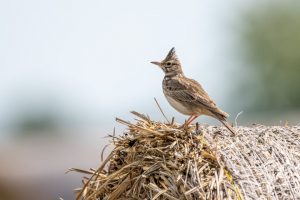Some people jump out of bed in the early hours of the morning, while others prefer a slower start to the day. Whether you get up with a smile or a groan, scientists say that your internal clock—known as your circadian rhythm—could influence this behavior and much more.
Timing of Activities can Play a Role
These biological clocks regulate not only the sleep-wake cycle, but also a variety of daily physiological and metabolic functions. A growing body of research suggests that circadian rhythms play an important role in health and resilience.
A new study by the University of Florida Health, funded by the National Institute on Aging (NIA), now shows that the timing and regularity of your daily activities may be linked to improved cardiorespiratory fitness and walking performance—two important indicators of healthy aging. The study found that older adults with earlier and more regular daily activity patterns had better heart and lung fitness than those with later or more irregular schedules.
“We’ve known for a long time that physical activity supports healthy aging, but this study shows that the timing of activity may also play a role,” said Dr. Karyn Esser, senior author and professor and chair of the Department of Physiology and Aging at the UF College of Medicine. “The circadian mechanisms that control the daily rhythm in our system are important for our well-being.”
However, the study, published in Medicine & Science in Sports and Exercise, does not prove a causal relationship, Esser emphasized. While the findings are promising, she said, more research is needed to determine whether adjusting activity schedules can lead to health improvements and whether these findings can be applied to younger populations.
Key Findings Include:
The researchers enrolled about 800 independent older adults with an average age of 76 in the study. Participants wore wristbands for seven days that continuously recorded their activities. They then underwent a cardiopulmonary exercise test to obtain a comprehensive assessment of their heart and lung health.
- Activity and rest cycles with higher amplitude—reflecting higher activity during the active phase of the day compared to the rest phase—were associated with better cardiorespiratory fitness and walking performance.
- An earlier daily activity peak—defined as the time of day when individuals were most active—was associated with improved cardiorespiratory fitness and walking performance.
- Greater consistency in daily activity patterns, e.g., when the peak activity occurred at the same time each day, was also associated with better outcomes.
Future Health Strategies Could Include Tailoring Activity and Treatment Plans to the Individual’s Internal Clock
Activity includes all daily movements – walking, gardening, cleaning, or shopping – not just exercise. The body’s internal clock helps regulate physiological functions such as hormone release, blood pressure, and core temperature to the natural day and night cycle. Disruptions to this rhythm, such as those caused by jet lag or shift work, can have negative effects on sleep, mood, and physical performance.

“Each of us has a chronotype — a biological tendency to be more alert in the morning or evening — and these differences can play an important role in our health,” Esser said. We are moving toward a future where understanding and respecting our individual rhythms can help improve medical care and daily life. Scientists use a simple shorthand to describe whether someone is a morning person or an evening person. An early riser is a “lark,” named after the bird whose song is often heard at dawn. Late risers are “owls,” named, of course, after the bird that hunts at night and sleeps during the day.








